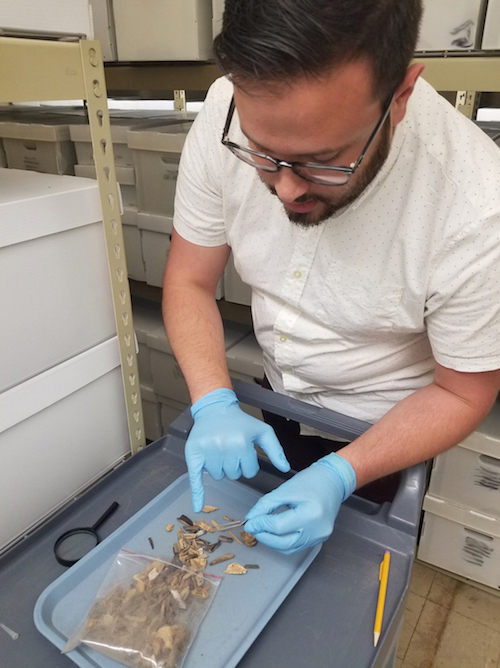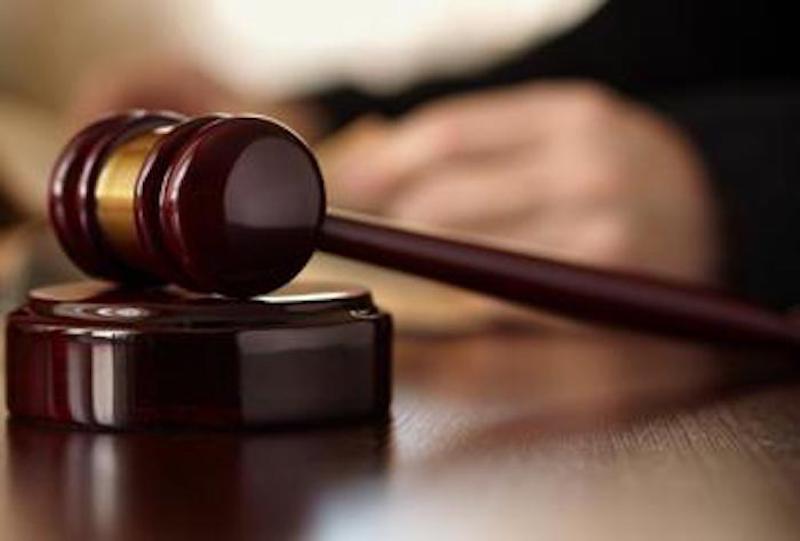Daily Business Report-July 12, 2018
Michael Walters, a UC Davis osteologist, shows how he sorts through animal bones from archeological digs to find any human bones that have beeh misclassified. (Photo by Felicia Mello for CALmatters)
Native American tribes clash
with UC over bones of their ancestors
By Felicia Mello | CALmatters
As tribal archaeologist for the Pechanga Band of Luiseño Indians, Myra Masiel uses her UC Berkeley anthropology training daily. Her mission: track down skeletons of Native Californians extracted from gravesites over the last two centuries and shipped off to museums around the world, and return them to the tribe’s ancestral land near Temecula so they can be reburied with dignity.
But lately that quest has put Masiel at odds with her alma mater.
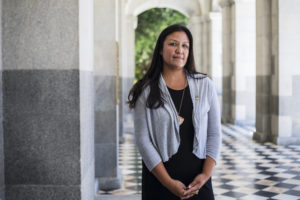
The remains of thousands of Native Americans, along with possessions such as beads and fishhooks buried with them, now sit in drawers and boxes at University of California museums. Federal and state laws require their return to tribes able to prove a connection to them. Some tribes accuse university officials of delaying so professors can continue to study the bones, and are pushing state legislation to force UC to speed its efforts.
“As an anthropologist, you don’t own what you’re taking care of. They’re in your care,” said Masiel. “But I think the research community does feel that they own them.”
Over decades, archaeologists and common looters excavated Native American cemeteries—some even motivated by the racist eugenics movement, which compared skull shapes to attempt to prove white superiority.
In 1990, U.S. law began requiring federally funded museums to list remains in their collections, along with any “associated funerary objects” or other sacred items, and share the list with tribes, who could then make repatriation claims. California law extended that approach to state-funded museums.
But UC campus responses varied widely. UCLA’s Fowler Museum has transferred nearly all of the 2,300 remains in its collection to tribes, according to its archaeology curator, Wendy Teeter. But at UC Berkeley’s Phoebe Hearst Museum, which holds one of the largest collections of human remains in the country, fewer than 300 bodies have been returned out of more than 9,000.
“It’s a huge black eye on the institution,” said Phenocia Bauerle, Berkeley’s director of Native American Student Development. She said the slow pace of repatriation has hurt her ability to build trust with Native American students and tribes.
Randy Katz, Berkeley’s vice chancellor for research, said the university “works diligently to care for (remains) in a respectful and legal manner.” He noted that he recently appointed more Native Americans to the campus committee reviewing repatriation requests, once dominated by anthropologists and with only one Native American member.
Pechanga’s dispute with the Hearst Museum began on San Nicolas Island, a sandy, scrub-covered outpost about 60 miles offshore of Southern California, owned by the Navy. Archaeologists with the Navy and Cal State Los Angeles were digging there, seeking to unravel the mystery of the Lone Woman, a Native American whose story inspired the novel Island of the Blue Dolphins.
That didn’t sit well with the Pechanga tribal council, which said traditional songs and stories prove the tribe’s connection to the island. It filed a petition with the Navy, which agreed the tribe had a cultural affiliation with the area. That meant digging had to stop—and by law, the nearly 500 remains uncovered on the island over the decades could go to the tribe.
In what tribal representatives describe as a six-year saga, other museums—including UCLA’s Fowler—have said they will return bodies they have from San Nicolas. The Navy has given permission for island reburial to Pechanga and three other Luiseño and Chumash tribes. But UC Berkeley insists it must conduct its own investigation before returning some of the remains.
The dispute reflects a longstanding clash of worldviews, with UC academics weighing concerns of descendants against potential research benefits.
“There’s a wealth of data in the human body,” said Robert Bettinger, professor emeritus of anthropology at UC Davis. “We can trace a whole series of isotopes that will tell us about your diet, about the water you drank and probably the region you came from.”
Bettinger worries that if tribes rebury remains without allowing anthropologists to examine them, society will lose the opportunity to gain detailed knowledge about life in western North America before Europeans’ arrival. “Maybe this is patronizing from an archaeologist’s point of view, but I think someday, somebody in the Native American community is going to ask, ‘Why don’t we know this?’ ” he said. “And the answer will be because some of your forebears decided it was more important not to know that.”
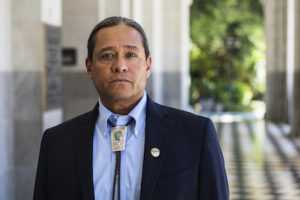
But for many tribes, the very idea that their ancestors would become research objects is, in Pechanga chairman Mark Macarro’s word, “abhorrent.”
“As long as these remains are out there and our people are in pieces in different institutions,” he said, “the tribes have this sense that things are really out of balance.”
Macarro subscribes to the Luiseño view that the world was created in the Temecula Valley, and is skeptical of academics who he sees as guessing at history, constantly changing their ideas as new evidence discredits the old ones. “Look, if you want to know the past,” he said, “talk to us.”
California’s Assembly has passed legislation by San Diego Assemblyman Todd Gloria, a member of Alaska’s Tlingit Haida tribe, to create a uniform UC repatriation process, overseen by the state’s Native American Heritage Commission. Tribes would have equal representation on campus committees, and the state auditor would review UC’s legal compliance. “If (research) was done in a cooperative fashion with the descendants, maybe something could happen here,” Gloria said. “Sadly, right now the relationship is very adversarial.”
Matching centuries-old skeletons with contemporary Native American groups can be challenging. Poor record-keeping abounds. Even when likely descendants are identified, they sometimes lack the money or land to take on repatriation.
UCLA’s Teeter said her team reaches out to tribes to help identify the origin of remains.
“We’re not talking about Neanderthals; we’re not talking about Homo erectus. We’re talking about people that are sometimes just a generation or two separated from us,” Teeter said. “There’s more value in making sure our relationships are true and ethical than in trying to hold onto (someone’s) ancestors.”
Teeter said the collaboration with tribes is one reason for UCLA’s high repatriation rate. At UC Berkeley, by contrast, campus officials have designated more than 80 percent of the remains in its North American collection as “culturally unidentifiable”—a legal limbo that means researchers can study the bones without seeking permission from any tribe. Katz says that’s because they come from a broader range of places and time periods.
In a basement room filled with white file boxes, UC Davis osteologist Michael Walters sorts through plastic bags full of bone fragments so small they look like wood chips. He’s searching for human bones that were mislabeled as animal, and sometimes he finds them—a body part from a child, for example, that was so small that an undergraduate in the 1960s decided it must have come from a bird.
Walters is part of a three-person team hired by UC Davis to update its inventory of about 300 sets of Native American remains—finding additional bones that researchers in the past missed, and returning those that can be repatriated to tribes.
Human bones go to a separate room closed to the public and the press. There, black curtains cover the shelves that house the bodies, the lighting is dim, and there’s an area for tribal representatives to make religious offerings, according to staff.
Walters wears gloves, and speaks to the bones while he works. “I do say hello and good morning to them, I apologize for colonialism,” he said. “My goal is to get that person home.”
But even this process is controversial. The United Auburn Indian Community says its own claim for repatriation of remains and sacred items from UC Davis has dragged on for years, and objects to scientists handling the bones as disrespectful.
The scientists contend they must ensure there’s sufficient evidence to repatriate the bones—or they could be sued by anthropologists who want to study them. In 2012, Bettinger and two other UC scientists seeking DNA to study ancient migrations sued but failed to stop the university from transferring two 9,000-year-old skeletons to the Kumeyaay tribes.
UC has not taken a position on Gloria’s bill, though Berkeley’s Katz said he’s “concerned that as written it will increase layers of bureaucracy and hobble our ability to act swiftly on the advice of the new (committee) we’ve established that is more representative and inclusive of Native American perspectives.”
While the tribes await Senate action, Masiel continues her work. Last month, she flew to Europe to consult with a museum about remains that she says have ties to her people.
“The tribe, we’re very patient,” she said. “We don’t forget. I will continue to fight for these people until they get returned back to where they came from.”
CALmatters.org is a nonprofit, nonpartisan media venture explaining California policies and politics. This story and other higher education coverage are supported by the College Futures Foundation.
_________________
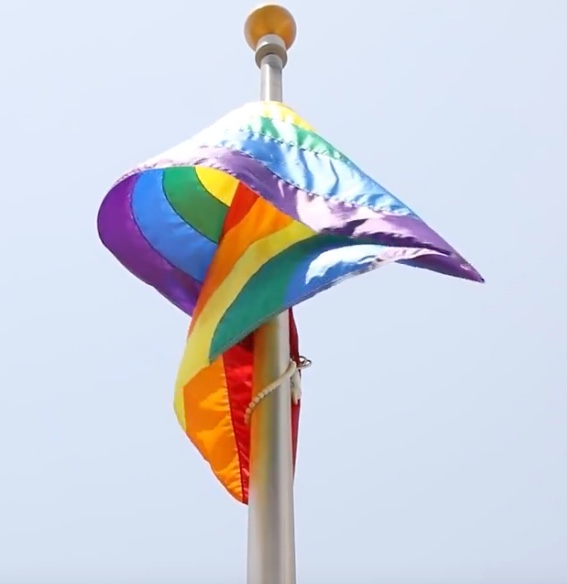
Alumnus’ $1 million gift to SDSU
supports Pride Center, LGBT studies
Robert DeKoven, a former Associated Students president at San Diego State University in the late 1970s, has made a planned gift to support SDSU’s Pride Center and LGBT Studies Program. The $1 million gift was announced Wednesday at SDSU’s Pride Flag Raising ceremony, an annual campus event. SDSU is the second university in the United States and the first in California to offer a major in LGBT studies.
“I can never repay SDSU for the educational experience I received here,” said DeKoven, a legal writing professor at California Western School of Law and affiliated faculty member in SDSU’s LGBT Studies Program.
The Robert DeKoven Endowment for Leadership, Inclusion and Entrepreneurship will support curricular and co-curricular activities. DeKoven is a long-time supporter of SDSU’s Lavender Graduation, which celebrates the achievements of graduating LGBTQ students.
DeKoven (’80) was a co-author of the Human Dignity Ordinance passed by the San Diego City Council in 1990 to prohibit discrimination based on sexual orientation in housing, employment and lending.
_________________
BrainLeap Technologies
Awarded $225,000 Grant
BrainLeap Technologies Inc. has been awarded a National Science Foundation Small Business Innovation Research grant for $225,000 to continue research and development on BrainLeap’s suite of attention training games. The grant is specifically focused on developing gamified assessments that act as independent measures of attention.
The gamified assessments will be built into the attention training suite to measure improvements in attention similar to what is currently done in a research lab. The combination of attention training games and assessments will enable teachers, administrators, and parents to support struggling learners by helping them improve their foundational attention skills. Just as reading is a foundational skill for learning science and history, attention is foundational to effectively focusing on education material in the classroom and at home.
_________________
Construction costs rise dramatically
as tariffs against foreign goods take effect
Construction costs accelerated again in June, with steep increases for a wide range of building and road construction materials as tariffs against foreign goods come into effect, according to an analysis by the Associated General Contractors of America of new Labor Department data. Association officials say that contractors will have to assume much of the costs as tariffs increase the costs of many key construction materials.
“Contractors’ costs for a wide range of materials and services have escalated dramatically in the past few months, putting a squeeze on profits and dimming the outlook for both public and private projects,” said the association’s chief economist, Ken Simonson, noting that the U.S. imposed steel and aluminum tariffs on imports from Canada, Mexico and the European Union on May 31 and has since announced over $200 billion in tariffs on Chinese goods. “Tariffs that took effect or have been announced since this price data was collected will push costs up even more.”
_________________
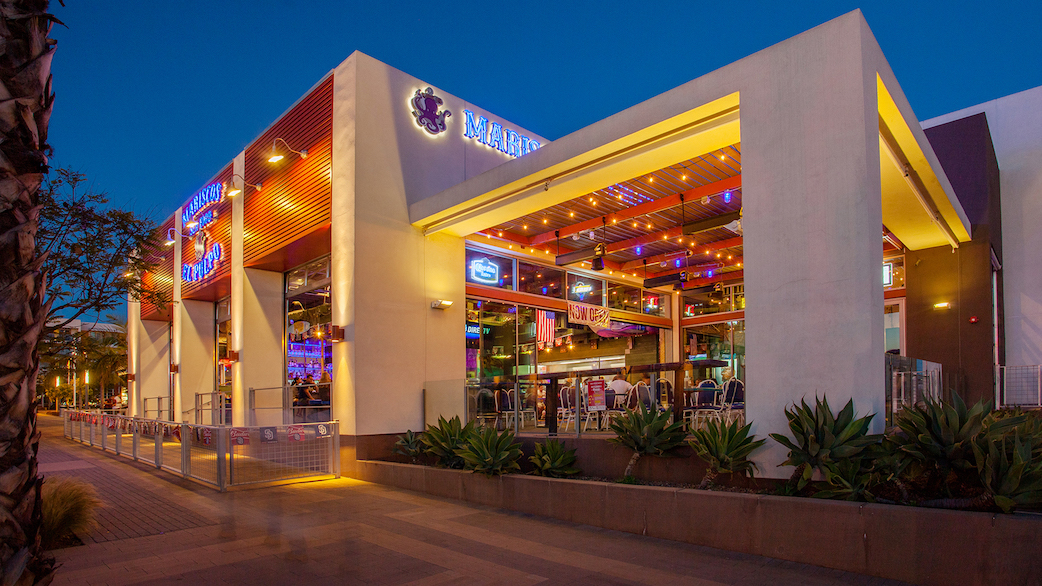
New restaurants, retailers and services
coming to Mercado del Barrio
Shea Properties announced new restaurants, retailers and services now open or coming soon to Mercado del Barrio, the mixed-use center located in the heart of the Barrio Logan district. Mercado del Barrio is located under the Coronado Bay Bridge and adjacent to Chicano Park.
The center will welcome three additions:
- Attitude Brewing Company, with a 22-tap tasting room, will showcase a variety of craft beers, including a Mexican-style lager, Bavarian-style hefeweizen, India pale ale (IPA), coffee stout and more. The brewery will also serve gourmet wraps and burgers.
- Maggie’s Café will serve breakfast, lunch and dinner classics ranging from eggs benedict and breakfast burritos, to tortas and burgers. This will be Maggie’s second San Diego location.
- Dough Nation specializes in authentic Italian food and craft beer. Menu highlights include pizza rolls, meatball sandwiches, as well as a few unique Italian-Mexican fusion options, such as the Al Pastor pizza.
The most recent openings at the center include Pho Bo, specializing in Vietnamese rice noodle soup; Mailbox & More, a resource for packing, shipping, printing and business service needs; Eldahmy Wellness Pharmacy, offering innovative pharmacy care services, preventive therapies, and high quality vitamins and supplements; Posh & Polished, a nail salon; and Smart Set Aesthetics, providing makeup artistry, aesthetics, microblading, and salon services.
Mercado del Barrio is anchored by Northgate Market, one of the nation’s leading Hispanic markets selling day-to-day grocery items and prepared foods, and also features a variety of restaurants, shops and service retailers.
_________________
UC San Diego admits 38,954 new
freshmen and transfers
The University of California San Diego has admitted 29,601 freshman and 9,353 transfer students out of a record 116,452 applicants. The number of freshman admits is down slightly (2 percent) compared to last year’s record of 39,802 students; yet the university increased its offers of admission to first-generation students (up nearly 5 percent among freshman and transfers), with nearly one-third of the admitted class being the first in their family to attend a four-year college. In addition, the campus saw a 55 percent jump in admitted local, San Diego students, and admitted more underrepresented students compared to last year.
The academic caliber of UC San Diego’s new students continues to be exceptional. The average GPA among new freshman admits is 4.13 and they bring average SAT scores of 629, 697, 644, respectively, for Critical Reading, Math and Writing. Among transfer admits the average GPA is 3.59.
_________________
San Diego named in top 10 cities
positioned for long-term success
The City Momentum Index, produced by JLL, tries to identify the cities that are at the forefront of the innovation economy, by looking at key factors such as the number of tech firms, education, environment, transparency, infrastructure, and international patents.
_________________
County opens Erosion
Control Center in Alpine
To help people living in and around the areas burned by the West and Building fires, the county of San Diego has opened an Erosion Control Center.
Open by appointment only, the County Department of Public Works staff will advise people about how to protect their properties, homes, garages, sheds, and other structures and provide free sand, sandbags, fiber rolls and items to stabilize properties before rains arrive. Staff will also be able to go to people’s properties to visually inspect and offer advice about how best to protect structures.
To make an appointment, call (888) 846-0800. For more information on erosion control, click here
_________________
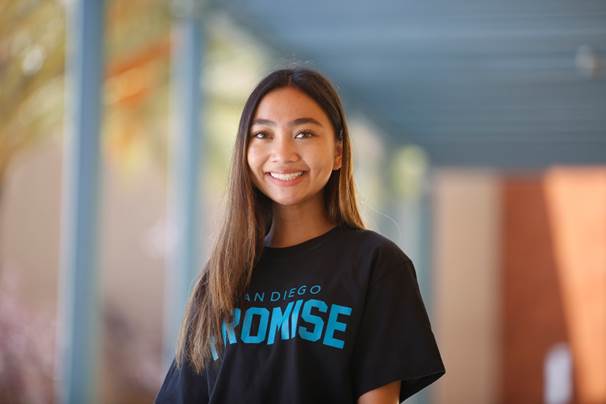
Aug. 3 deadline approaching for
free tuition program
Aug. 3 is the deadline for high school students and others to sign up for the tuition-free San Diego Promise program in the San Diego Community College District (San Diego City College, San Diego Mesa College, and San Diego Miramar College.)
To qualify for the tuition-free program, students must be a California resident or have attended a California high school for three years and have earned a high school diploma in June 2017 or later; be a first-time college student; enroll in at least 12 units; and complete a 2018-19 FAFSA or Dream Act application. All who meet the criteria and commit to a full-time course of study in the program will be accepted.
Students can complete a San Diego Promise interest form for City, Mesa or Miramar College at www.sdccd.edu/promise.
Launched as a pilot program in 2016 with 186 students, the San Diego Promise included 661 students at City, Mesa, and Miramar colleges during the just-completed 2017-18 academic year. The expanded program will cost an estimated $1.86 million in 2018-2019, with participating students’ first year funded through an allocation in the state budget called the California College Promise, and students’ second year underwritten through an SDCCD-led fundraising campaign.
_________________
Diplomacy Council offering citizen
diplomacy trip to Cuba in 2019
The San Diego Diplomacy Council will partner with Cuba Cultural Travel to offer a citizen diplomacy trip to Cuba from March 1-8, 2019. The itinerary includes visits with professors, journalists, artists, historians and alumni of exchange programs across the country in Havana, Artemisa, Cienfuegos and Trinidad. Given the citizen diplomacy focused itinerary, the council is hoping to fill the remaining 15 spots with globally engaged individuals.
An informational session will be held on Tuesday, July 24 at 5:30 p.m. at Downtown San Diego restaurant Havana 1920 at 548 Fifth Ave. for those who wish to learn about the trip from the guide himself. RSVP to Natalie@SanDiegoDiplomacy.org if you would like to attend.
More info as well as itinerary can be found on the website, https://sandiegodiplomacy.org/event/join-our-people-to-people-educational-exchange-cultural-diplomacy-tour-to-cuba/
_________________
San Diego County’s most polluted
neighborhoods could get new air monitors
inewsource
Some of San Diego County’s most polluted neighborhoods could get 25 new air quality monitoring stations by the end of the year. County air pollution officials are asking the state for funding to put the monitors in Barrio Logan, Sherman Heights, Logan Heights, parts of National City, and parts of Otay Mesa and San Ysidro. Officials hope the testing program will provide more information about the level of air pollution in these neighborhoods.
Unlike the county’s eight existing monitors, which measure air pollutants on a regional level, the new system would be at the street level.
_________________
San Diego school board approves
$3.5 billion bond measure for ballot
(TNS) — The San Diego Unified School District will ask taxpayers to approve borrowing $3.5 billion to improve school safety, technology and infrastructure. It is the largest bond request in the district’s history and the third in the last 10 years.
Board members voted 4-0 Tuesday to place the 30-year bond, known as the “San Diego Neighborhood School Repair and Student Safety Measure,” on the November ballot.
If passed by at least 55 percent of voters, it would add 6 cents to property tax bills for every $100 of assessed valuation, or about $300 for a home valued by the county at $500,000.
______________________________________________
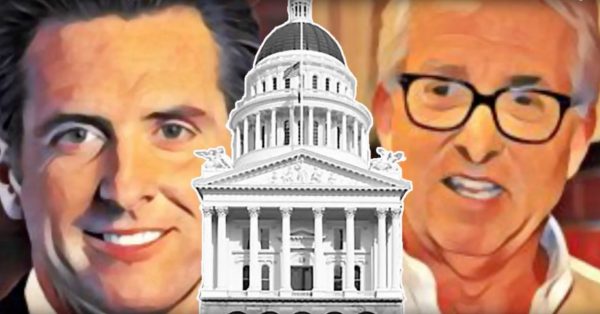
Insiders bet heavily on Gavin Newsom
By Dan Morain | Lucas Public Affairs
Democratic gubernatorial front-runner Gavin Newsom has raised $2.4 million since winning the June 5 primary, pulling in donations from a major backer of his vanquished rival, Antonio Villaraigosa, and insiders with issues pending in Sacramento, my count shows.
Indicating how donors expect the race to turn out, Newsom’s Republican opponent, John Cox, raised half as much, though the wealthy businessman boosted his total to $1.8 million by giving his campaign $590,000.
Making amends: Netflix founder and charter school advocate Reed Hastings, who gave $7 million to an ill-fated independent campaign to help Villaraigosa, donated the maximum $29,500 to Newsom in June.
Business matters: Some donors are especially narrowly focused. One is the Motor Vehicle Software Corporation, an Agoura-based contractor that does business with the Department of Motor Vehicles. Governors appoint DMV directors.
In a two-day period in June, the corporation and its chairman, Kelly Kimball, gave Newsom’s campaign a combined $116,800, the maximum allowed.

